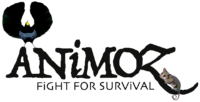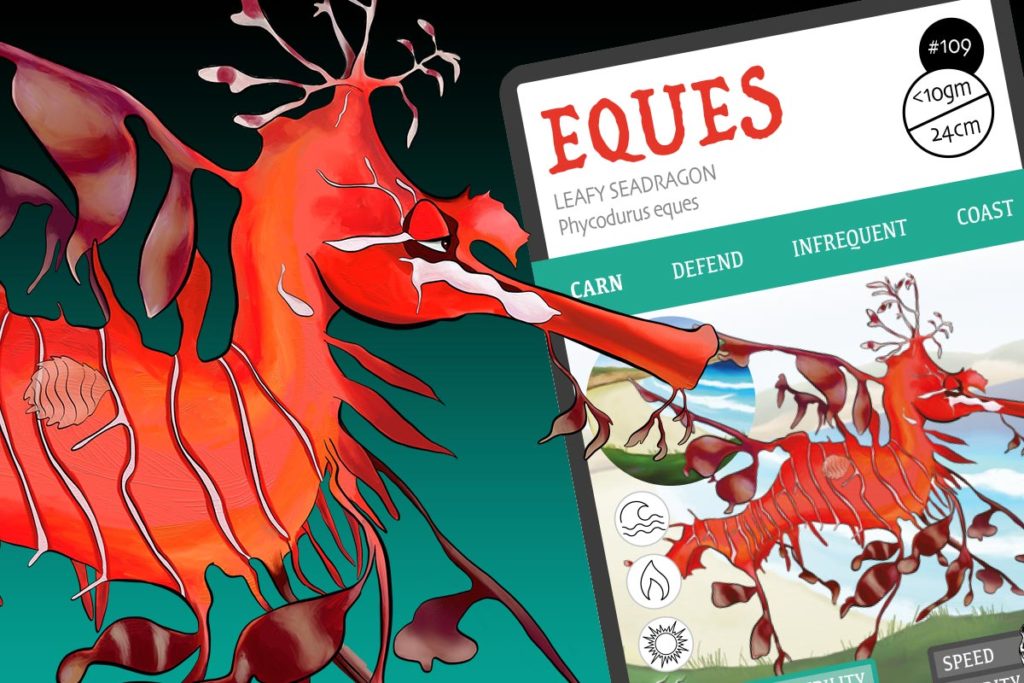EQUES is the Leafy seadragon (Phycodurus eques) – master of camouflage!
Species report on the Leafy seadragon
- EQUES is a master of camouflage with a body covered in leaf-like protrusions and the ability to change colour!
- They grow 20-24 centimetres long, but it is unknown how long they live for.
- Leafies are the marine emblem of South Australia, where they are most commonly seen.
- Fun Fact: They are Ranger David Attenborough’s favourite animal!
Leafy seadragons, affectionately known as leafies, are a symbol of good luck among divers. Found only along the south coast of Australia, some divers will wait their whole lives to see one!
Some special Superpowers:
EQUES get their name from their leaf-like appearance and dragon-like shape (they are not related to seahorses).
They lack any form of defence, so they aim to remain hidden from predators simply by camouflage – using their Superpower of INVISIBILITY – and by changing colour using their FINCRYPSIS Superpower!
They live in areas covered by underwater vegetation, and their yellow-green colour helps them look like a piece of drifting seaweed. EQUES have only tiny, transparent fins behind their neck and under their belly to help them move through the water. The rest of their shape is decorative camouflage.
What does the Leafy seadragon eat?
EQUES is related to pipefish, so named for their long, thin shape and suction feeding method. EQUES eats zooplankton and small crustaceans, sucking them up through their tube-like mouths!
Like seahorses, the male is the one who carries the eggs! Mating season is October to January, and this is when they are most commonly seen. Females lay about 250 eggs directly onto a male’s belly where he has a brood patch. As soon as the eggs hatch, the tiny leafies are independent. Only 5% of the hatchlings will survive to the age of two when they will breed for the first time.
As a camouflage specialist, EQUES has little need to move to avoid predators, so they simply don’t move very much. The fastest recorded EQUES movement was 150 metres in one hour. In contrast, they can remain stationary for up to 68 hours! Although, in the currents under jetties they are probably putting quite a bit of effort into staying still!
This does mean, however, that one of their Weaknesses in ANiMOZ is Speed – so if they Clash with an animal that does manage to spot them, they might be in trouble!
Is the Leafy seadragon endangered?
EQUES the Leafy seadragon is listed as Near Threatened, which means there are not very many concerns about their population size, but they do face some threats.
The most pressing of these is Climate Change – one of the Dangers in gameplay that no Ranger or animal can overcome!
As water temperatures change, their habitats are put at risk and may even disappear. They also face some threat from pollution and illegal poaching.
Read more species reports from ANiMOZ Ecologist, Ranger Tessa here:
Have you ever seen EQUES in the wild? Make sure to share your photos and tag #wildANiMOZ!


